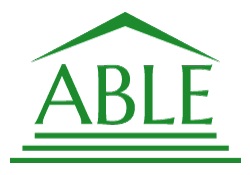ABLE Accounts: How this account can benefit the disabled and their families
Quick fact: 61 million adults and over 12.6 million children in the United States have some type of disability.
In 2015, The ABLE account started as a way for disabled persons or their families to save money without losing government benefits.
Why It’s Hard for the Disabled to Save Money
There are many government benefit programs for disabled individuals and their families. Most of these programs are means-tested. What does this actually mean? I had to look it up, so I am sharing it with you. This is determined by whether a disabled individual or family possesses the mean to do without assistance. These programs include Supplement Security Income (SSI), Social Security Disability Insurance (SSDI), food stamps (SNAP), Medicaid, and government housing vouchers. About 8.5 million people receive disabled-worker benefits from Social Security. The programs are very helpful but come with stipulations. If you have ever had these benefits suspended you know how devastating this can be.
The limitation or cap the government places on an individual or their family is cash accumulation over $2,000 or other countable assets. This makes it nearly impossible for disabled people to save money for emergencies, to buy a house or car, or to take a vacation.
What Is an ABLE Account?
The Stephen Beck, Jr., Achieving a Better Life Experience Act of 2014 (ABLE Act) is a federal law that authorizes the states to establish ABLE accounts. An ABLE account is a tax-advantaged account, similar to a Section 529 qualified tuition program. Contributions are not tax-deductible for federal income tax purposes, but they are wholly or partly deductible depending on your state. The money in an ABLE account grows tax-free, and withdrawals are tax-free without limit if made for “qualified disability expenses.” The best part is, contributions to ABLE accounts up to certain levels are not counted for the purposes of means-tested programs for the blind and disabled.
Who Can Have an ABLE Account?
To qualify to use an ABLE account, a person must have a disabling condition that began before age 26. This includes:
- any person who became eligible to receive SSI or SSDI benefits before age 26 due to blindness or disability
- any person of any age who files a certificate providing that he or she has a pre age-26 mental or physical impairment that
- Is medically provable
- Results in severe functional limitations
- Expected to last at least 12 months or to result in death
- Confirmed by a signed qualifying disability diagnosis from a qualified physician
- A blind or disabled individual need not be receiving disability benefits to open an ABLE account.
The age 26 cutoff prevents a majority of disabled individuals from opening ABLE accounts. Only about 10 percent are eligible, of the 61 million Americans who are blind or disabled.
Legislation is pending to increase the age limit to 46, which would allow six million more eligible individuals to open ABLE accounts.

How to Establish an ABLE Account
Only one ABLE account is allowed per disabled person. The account may be established by the disabled beneficiary or by a family member, a guardian, or a person with power of attorney. ABLE accounts may be established for both minors and adults. Adult beneficiaries can manage their own ABLE accounts, minor need an adult representative. But if the designated beneficiary is incapable of managing or chooses not to manage the account, a person with signature authority can control the account.
The ABLE account program is a state run program. Currently, 42 states and the District of Columbia have active ABLE programs. An out-of-state disabled person may set up an ABLE account in any state that allows out-of-state residents to do so.
Links to the ABLE account program websites of all participating states can be found at the ABLE National Resource Center website. This website also allows users to compare the ABLE programs of the various states. How about investment options? As with 529 college savings plans, states offer multiple investment options for their ABLE accounts.
How Much Can You Contribute Each Year?
The disabled individual, family, friends, and anyone else may contribute an aggregate amount not to exceed the annual gift tax exclusion. For 2021, this amount is $15,000 (the amount is adjusted for inflation each year).
In addition, ABLE account beneficiaries who work may contribute the lesser of:
- their compensation,
- an amount equal to the poverty line for a one-person household, (for 2021, that is $12,760.12)
- The Tax Cuts and Jobs Act created the compensation rule to encourage the disabled to work by permitting them to save all or part of their earnings in an ABLE account, that rule expired 12/31/2025. (So if you can, Take advantage!)
Additional Benefits: a disabled person who contributes money to an ABLE account and may be eligible to collect the saver’s tax credit of up to $1,000 ($2,000 if married).
- To qualify, the disabled person must have been born before January 2, 2003,
- Must not be a full-time student,
- Can not earn over $32,000 if single ($64,000 if married),
- Does not file as a claimed dependant.
Point of note: The saver’s credit is nonrefundable, this means that the disabled person who owes nothing in taxes (excluding refundable credits) is not going to get the credit.
Rollovers from Section 529 Plans
Families may roll over funds tax-free from a Section 529 plan to another family member’s ABLE account. Such rollovers count toward the annual ABLE account contribution limit. The Section 529 rollovers can be extremely useful if a family member has funds remaining in a 529 plan after completing college.
Pint of Note: Total contributions from all sources for the year to the ABLE account may not exceed $15,000, excluding the beneficiary’s contribution from his or her earned income.
Lifetime Limit on Contributions
The lifetime limit on how much can be contributed to an ABLE account is the same as the state’s Section 529 qualified tuition program limit. In most states this is $300,000 to $500,000. But disabled individuals who receive SSI cash benefits may have no more than $100,000 in an ABLE account or their benefits will be suspended.
Even with these limitations, having the ability to save without being penalized, that what I call a win!
Tax-Free Withdrawals from ABLE Accounts
Let’s just say you need to make a withdraw from the account. It‘s your money right? Here is the fine print, withdrawals are tax-free so long as they are “qualified disability expenses.”
Now, what does that mean exactly? Qualified disability expenses are broadly defined. This includes:
- expenses for education,
- housing,
- transportation,
- employment training and support,
- assistive technology,
- personal support services (such as home health aides),
- health care expenses,
- financial management and administrative services,
- legal fees,
- funeral expenses
- …So almost everything.
Withdrawals taken for non-qualified purposes are subject to regular income tax plus a 10 percent penalty tax.
Medicaid Payback After Disabled Person Dies
When an ABLE account beneficiary dies, any state may file a “payback” claim for reimbursement of Medicaid benefits paid by the state after the ABLE account was established.
What About Special Needs Trusts?
Since the 1960s, families of disabled individuals have been able to establish special needs trusts to pay for expenses not covered. The money in a special needs trust doesn’t count toward asset limits for benefit programs such as SSI and Medicaid. (yay!) ABLE accounts and special needs trusts are not mutually exclusive. In addition to a special needs trust, an ABLE account can be set up. One advantage ABLE accounts have over special needs trusts is that they are easier and cheaper to set up because they don’t require that a trust document be drafted.
What does this mean for you? It places the control and use of the money in your directly in your hands.
For this and other articles, please check out our website






